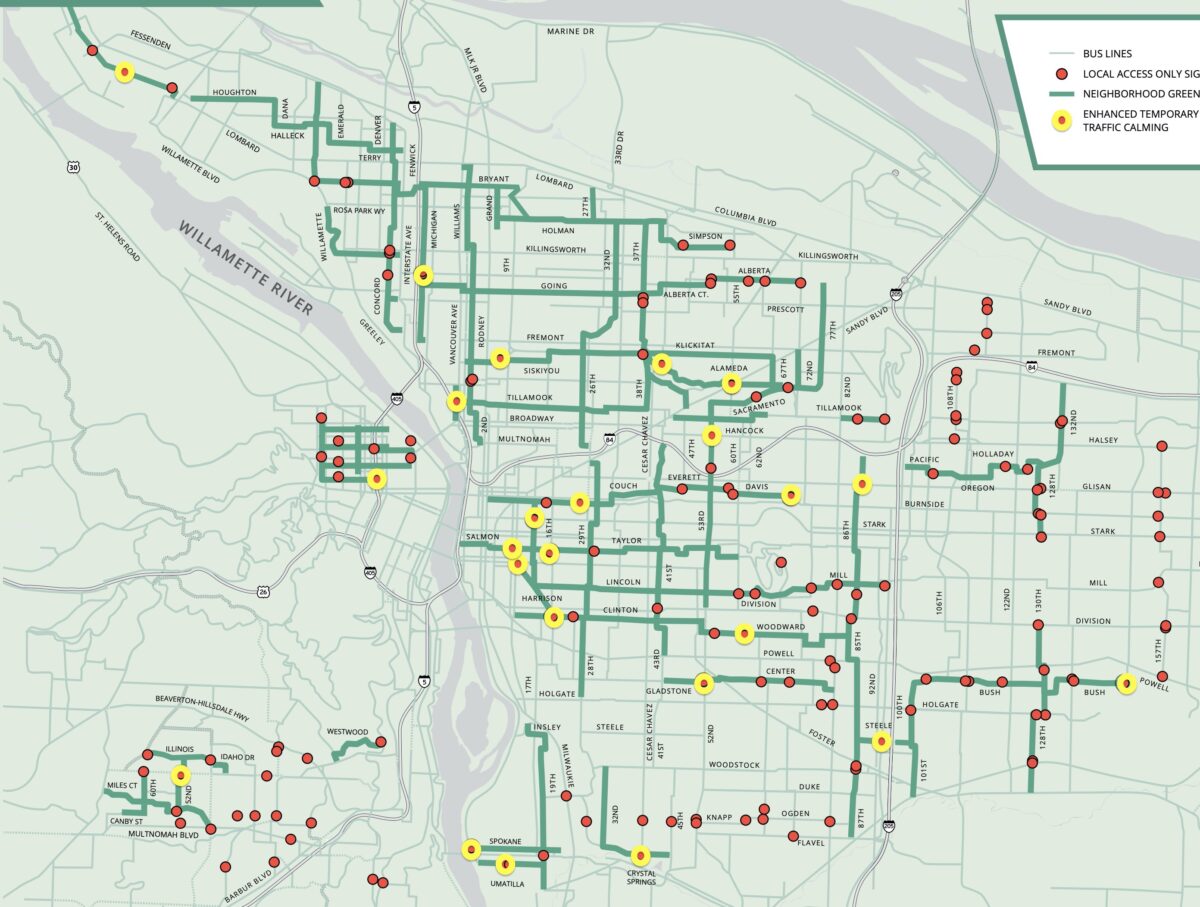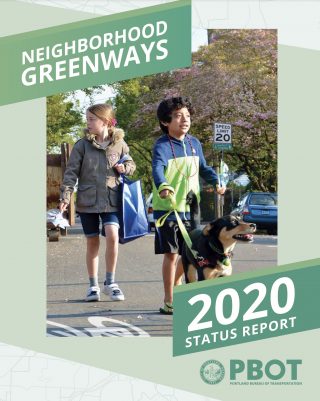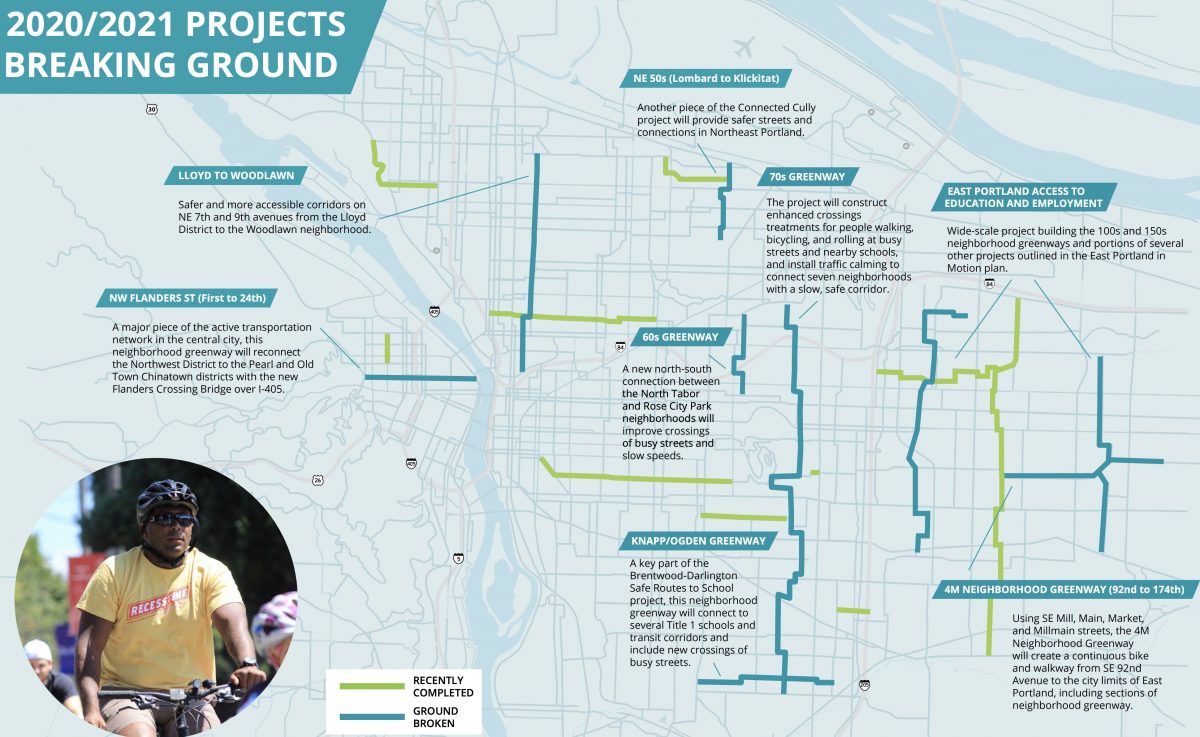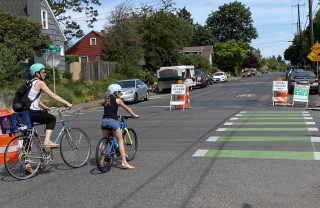
(Source: PBOT Neighborhood Greenways 2020 Status Report – edited slightly to add yellow circles for better visibility)

The City of Portland wants to take some of their Covid-inspired “slow streets” to the next level. And there are still too many drivers on streets where bicycle users are supposed to have priority. Those are two key “challenges” shared by the Portland Bureau of Transportation’s 2020 Neighborhood Greenway Status Report released Tuesday afternoon.
The new report follows up on PBOT’s 2015 Neighborhood Greenway Assessment Report, which was a more technical analysis of how greenways were performing in terms of traffic volume, safety, and speed. PBOT’s latest report is meant for a wider audience (11 pages versus 58 in the 2015 report) and offers an overview of neighborhood greenways in Portland two decades after city planners first began to create calm streets with the specific intention of reducing driver volumes and improving cycling conditions.
Advertisement


There are currently 103 miles of neighborhood greenways in Portland, the majority of which are in northwest, north/northeast and southeast neighborhoods. East Portland has long been trailing behind in greenway mileage but PBOT is working hard to reverse that narrative. The agency has 25 miles of greenways in east Portland either recently completed, under construction, or breaking ground soon.

(Photo: Jonathan Maus/BikePortland)
The big takeaway in the report is that PBOT recommends 25 locations where they’d like to install temporary traffic calming. The idea is to expand on the “Slow Streets” program they launched at 100 locations back in May. “As traffic moves back to pre-Covid levels,” reads the report. “These temporary installations will slow or reduce traffic on neighborhood greenways where there were high levels of traffic before the public health crisis.” In addition, PBOT wants to create a “seasonal Slow Streets program” that would make the “local access only” concept more permanent. The report also recommends the creation of “neighborhood-wide slow zones with fewer cars driving through residential areas.” The report doesn’t explain these “slow zones” but PBOT has already created one in northwest by a combination of lowering speed limits and strategically making driving more difficult on certain streets.
In addition to these 25 traffic calming locations, PBOT recommends more diversion on greenways in general. Portland adopted a goal in 2015 to build neighborhood greenways to have less than 1,000 drivers per day. When that doesn’t happen they try to keep them below 2,000 drivers per day. The new report recommends a diversion plan (focused on equity of course) that will, “provide proactive support for neighborhood greenways so they meet the standards adopted by city council in 2015.”
PBOT first started building cycling-priority streets in the late 1980s in an effort to protect neighborhoods from drivers trying to avoid SE Division. Portland built 10 miles of “bike boulevards” (what we called them before PBOT changed the name in 2010) in the ten years between 1996 and 2006. Beginning in 2010 with the passage of the Bike Plan for 2030, greenways supplanted bike lanes to became the dominant bikeway built in Portland. We’ve built 73 miles of them since 2006.
— Jonathan Maus: (503) 706-8804, @jonathan_maus on Twitter and jonathan@bikeportland.org
— Get our headlines delivered to your inbox.
— Support this independent community media outlet with a one-time contribution or monthly subscription.

